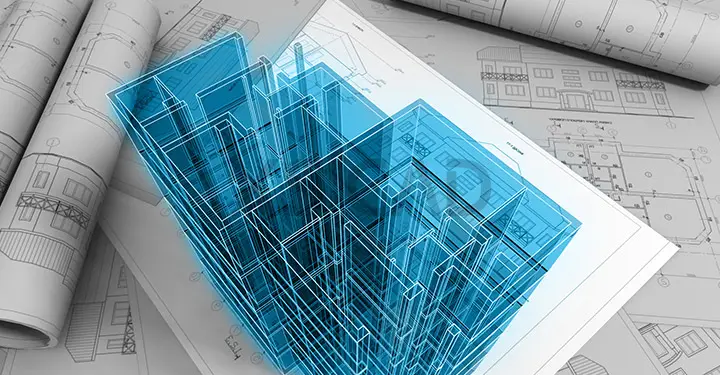Our Articles

What Is BIM Modelling?
Building Information Modelling, or BIM Modelling, has been the buzz word in the AEC industry for some time. It’s been known to facilitate unmatched opportunities for increased productivity and significant cost-savings. Adopted with increasing regularity in the US, UK, Scandinavia, Germany, Singapore, France, China, South Korea and other countries, BIM is gaining ground globally. Let’s understand what it is and why it works.
What is BIM?
BIM is first and foremost a process, but it’s much more than that. BIM is a 3D model-based process that provides architecture, engineering and construction (AEC) professionals information and tools to efficiently plan, design, construct and manage buildings and structures.
How does BIM work?
The essence of the BIM process is that it enables the creation of virtual 3D models that can be explored and manipulated, making it easier to understand the relations between spaces, materials and systems. A database generates a 3D image and creates building plans. Thus, the BIM process can build, view and test a structure in 3D. These abilities allow revisions and the assembly of accurate details. The detailed data permits design, clash detection, cost and scheduling. Each of the stages of design and construction benefit from its involvement in BIM, which generally works as follows:
Pre-design Stage
Schematic Design Stage
Detailed Design Stage
Construction Phase
What software is popular used for BIM?
The preferred software tools used on the BIM platform are Revit Architecture, Revit MEP, Revit Structure, as well as Navisworks, 3D Studio Max and AutoCAD.
What are the benefits of BIM for construction?
This model-based approach improves efficiency and bolsters coordinated project delivery. BIM saves time and costs for projects. Here are some of the advantages:
Detailed Information –BIM provides a wealth of information that’s easily accessible. Designers can access, add or edit data and share it in a model.
Less Rework – Using a shared model leads to less rework. Different disciplines can annotate and connect to the project. BIM drawing tools are faster than 2D drawing tools, and an extensive database provides the number and size of windows for quantity takeoffs, which are updated automatically.
Improve Collaboration – Sharing and collaborating with models is executed through a digital workflow. Much of this is delivered on the cloud. Software tools for different disciplines help share the complex project models and also help in coordination. Stakeholders of the project may review and update information at any time.
Simulation and Visualisation – Simulation tools enable designers to visualise a range of effects, such as the sunlight during different seasons or calculate a building’s energy performance. The relevant software can analyse and model the building for greater efficiency.
Resolve Clashes – BIM tools help automate clash detection of different elements, such as an electrical conduit or ductwork that runs into a beam. By creating a model, clashes are discovered early and costs can be decreased. Models help perfect prefabrication elements, allowing easy installation rather than be created on site.
Customising Process – Using BIM models or Revit BIM Models, steps, materials, and crews can be sequenced and coordinated for greater efficiency.
Saves Time – Traditional plans, sections, elevations and other reports can be generated from the model with automation, saving drafting time.
Accurate Views – The BIM model, with a great deal of detailed information, accurately conveys the project scope, process and outcome. The 3D model facilitates fewer steps to render views and walk-throughs.
Mobility – The model’s precise information and the capability of the cloud allows access to the model’s details from anywhere, on any device.
In general, the progress of BIM in worldwide construction practice is virtually inevitable. Its long-term general benefits can be summarised as follows:
XS CAD has valuable experience providing MEP BIM services and engineering design services for building services design consultants and general contractors. Our range of services for global consultants and contractors include fire protection system design, fire sprinkler system design, HVAC heat load calculations, fire detection and alarm system design, MEP 3D modelling and other building design and engineering services. We create these models and drawings using Revit, AutoCAD, MEP BIM processes and BIM Collaborate Pro for cloud collaboration.

